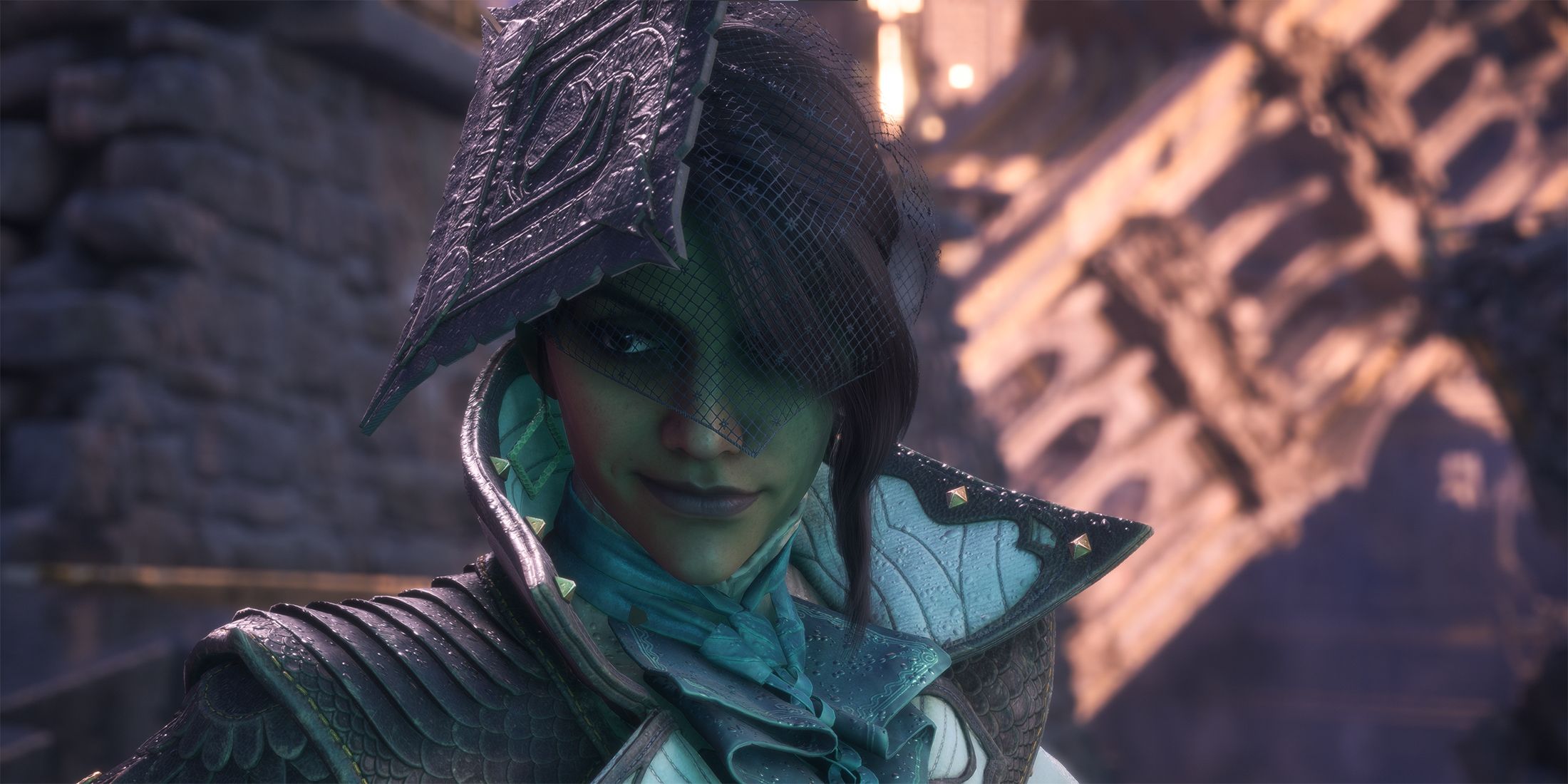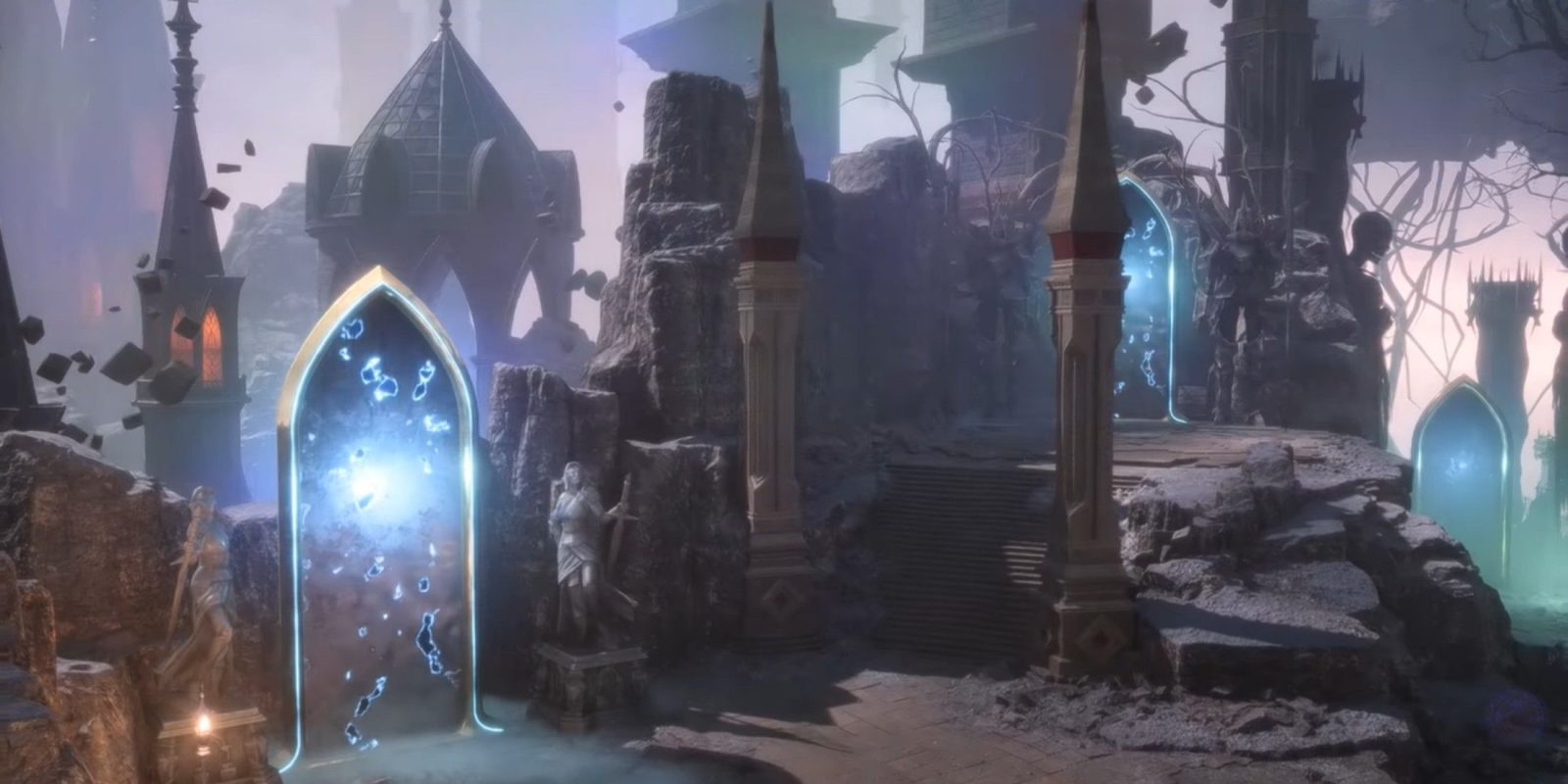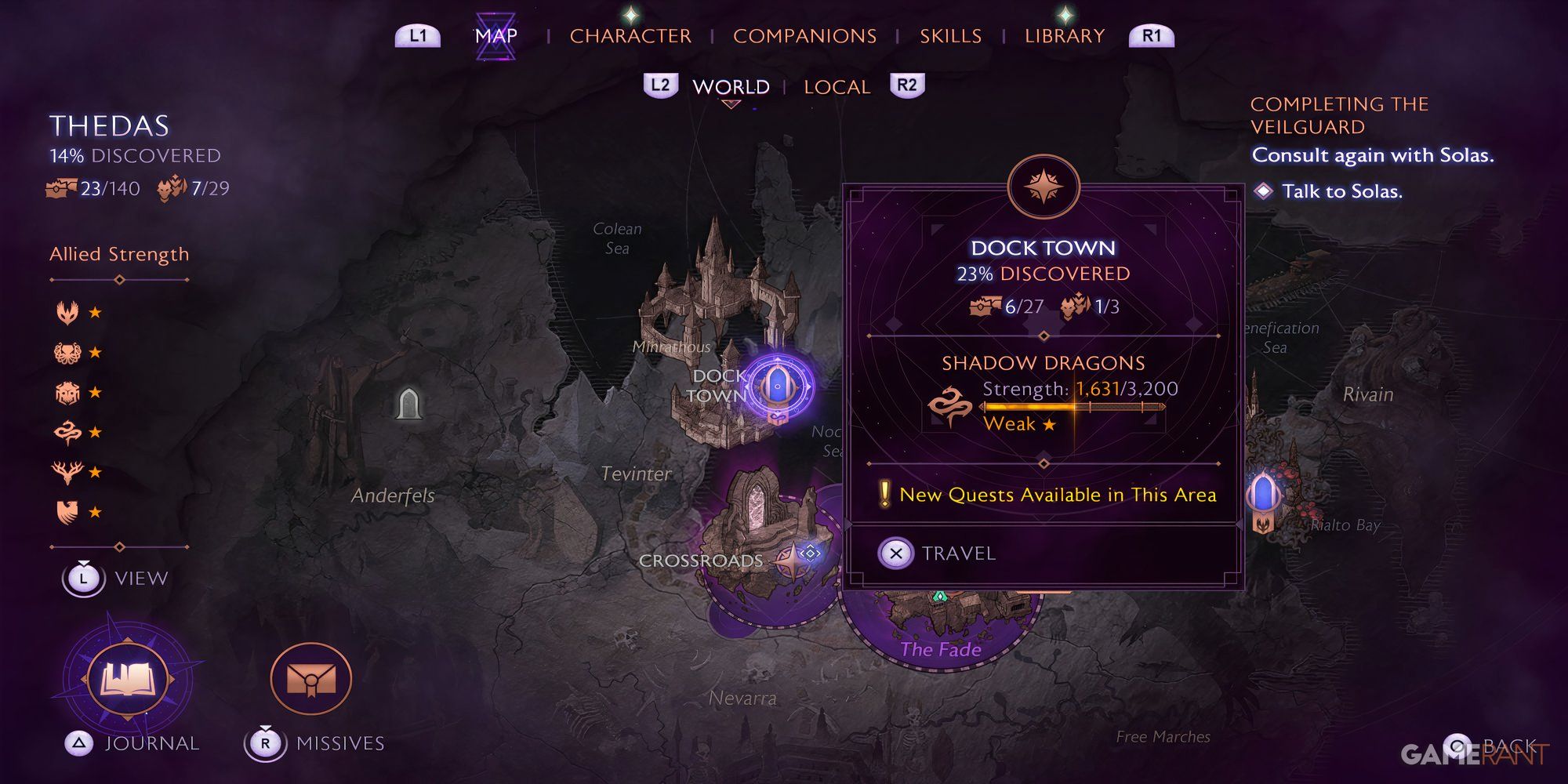The 10-year gap between the release of Dragon Age: The Veilguard and the last game in the series allowed BioWare to utilize some substantially more powerful hardware in developing the long-awaited sequel, with improvements to the game’s core elements and mechanics coming in tow. Dragon Age: The Veilguard is perhaps the most visually impressive game in BioWare’s high fantasy franchise, with its art direction and level design being series high points that transport players into Thedas as they’ve never seen it before. Interestingly, Veilguard‘s new approach to level design takes a page from the Metroidvania subgenre as much as it does from its RPG lineage.
While most games in the Metroidvania subgenre adhere to the 2D perspective of the portmanteau’s origins, several 3D games successfully incorporate signature elements like ability-gating, non-linear exploration, and interconnected maps that shuttle players back to previously explored areas in search of optional content and secrets. Dragon Age: The Veilguard‘s maps, along with its new approach to how the game structures traversal and RPG quests, see the title embracing these elements in a way that few could have anticipated given the series’ past. As a result, it’s a more content-rich experience that incentivizes exploration and discovery.

Related
Dragon Age: The Veilguard’s Best Feature Could Easily Go Unnoticed
While the way Dragon Age: The Veilguard handles choices is a mixed bag, there is one stroke of genius within them that may go unnoticed too easily.
Dragon Age: The Veilguard’s Maps Practically Beg for Return Visits
Exploration and returning to previous areas have always been key components of role-playing games, but Dragon Age: The Veilguard‘s new structure and approach to how it splits up the world of Thedas incorporate Metroidvania elements for the first time in the series. After completing a quest in a new area for the first time, players are notified that they can now return to areas in exploration mode, where they’re free to interact with NPCs, explore areas to uncover missed treasure chests, or even discover and take on new side quests. This would all be fairly standard RPG fare, were it not for the fact that some maps contain areas that are gated behind main story progression or gaining new party members and abilities.
Rook has the ability to call on each of their party members during exploration by holding a shoulder button and pulling up a radial menu, activating context-sensitive skills that aid in traversal. Players will come across several instances during Dragon Age: The Veilguard‘s main quest where they will see a platform just out of reach or a gate that can’t be opened yet, along with an on-screen indicator to call on an ability that the player doesn’t currently have access to. The incorporation of ability-gating into traversing Veilguard‘s maps, along with the incentive to frequently revisit areas the player has already explored, gives the game an unexpected (but welcome) Metroidvania thread in its tapestry.
The Crossroads Acts as a Meta-Metroidvania Unto Itself in Dragon Age: The Veilguard
As in Dragon Age: Inquisition, Veilguard players split their time in Thedas between a hub area (in this case, The Lighthouse) and the various regions of Thedas where the game’s story takes place. However, in Veilguard, players now have a middle-ground area that serves as a nexus between all regions of the game’s world in The Crossroads. And while players can easily follow quest markers and make a beeline to the correct eluvian for fast travel, there are plenty of locked doors and side quests to engage with, each of which opens up more and more of the Crossroads to explore while treating the player to challenging boss fights and worthwhile rewards.
Essentially, the Crossroads is tantamount to an interconnected map within the already impressively large and varied maps that comprise the various regions of Thedas, acting as a sort of meta-Metroidvania experience within the main quest of Dragon Age: The Veilguard. Combined with the wide variety of abilities players get to navigate these spaces and the potential for worthwhile rewards and progression hiding behind every corner, Dragon Age: The Veilguard‘s exploration is a definitive step up from the series’ past.














Leave a Reply